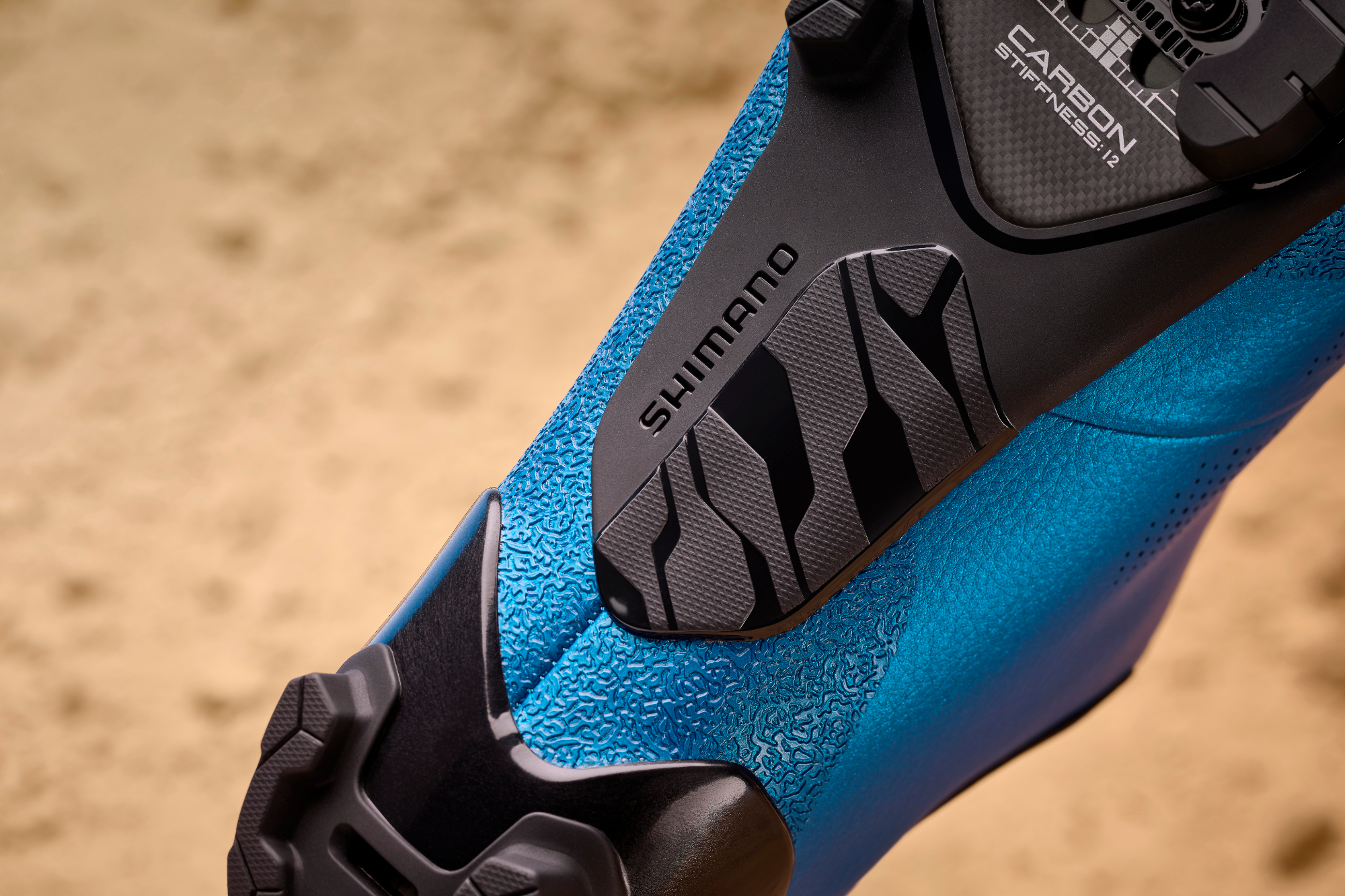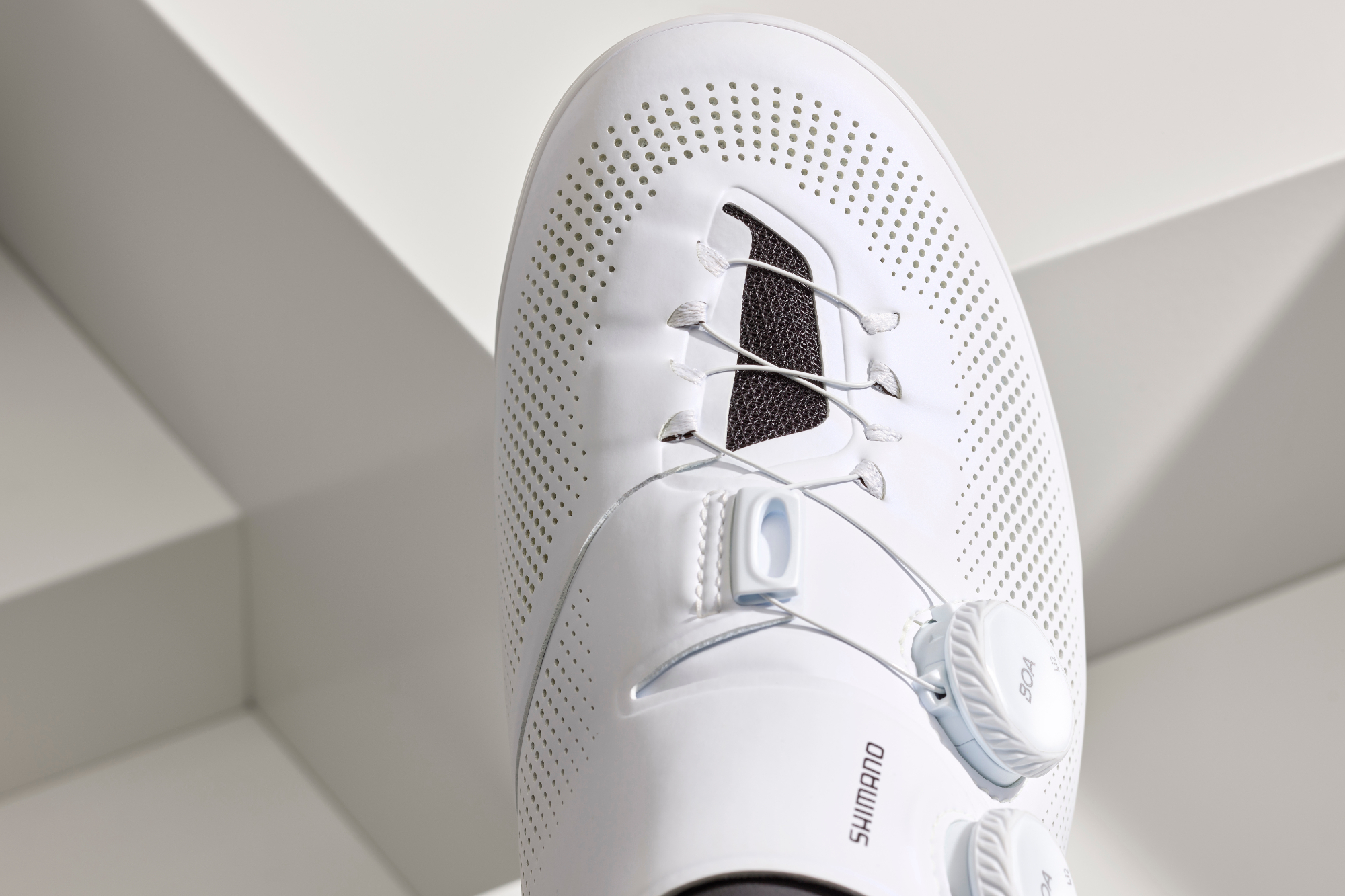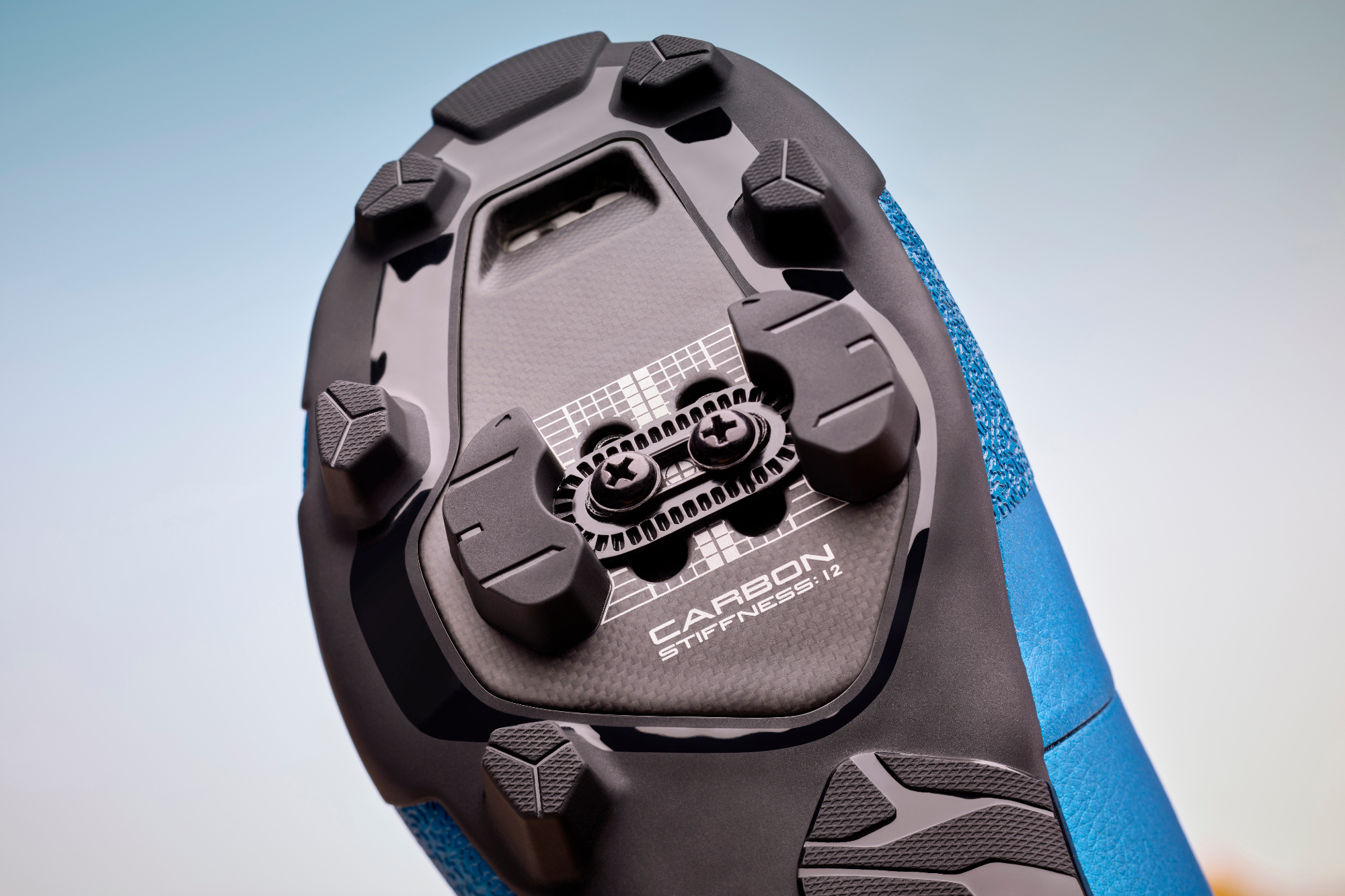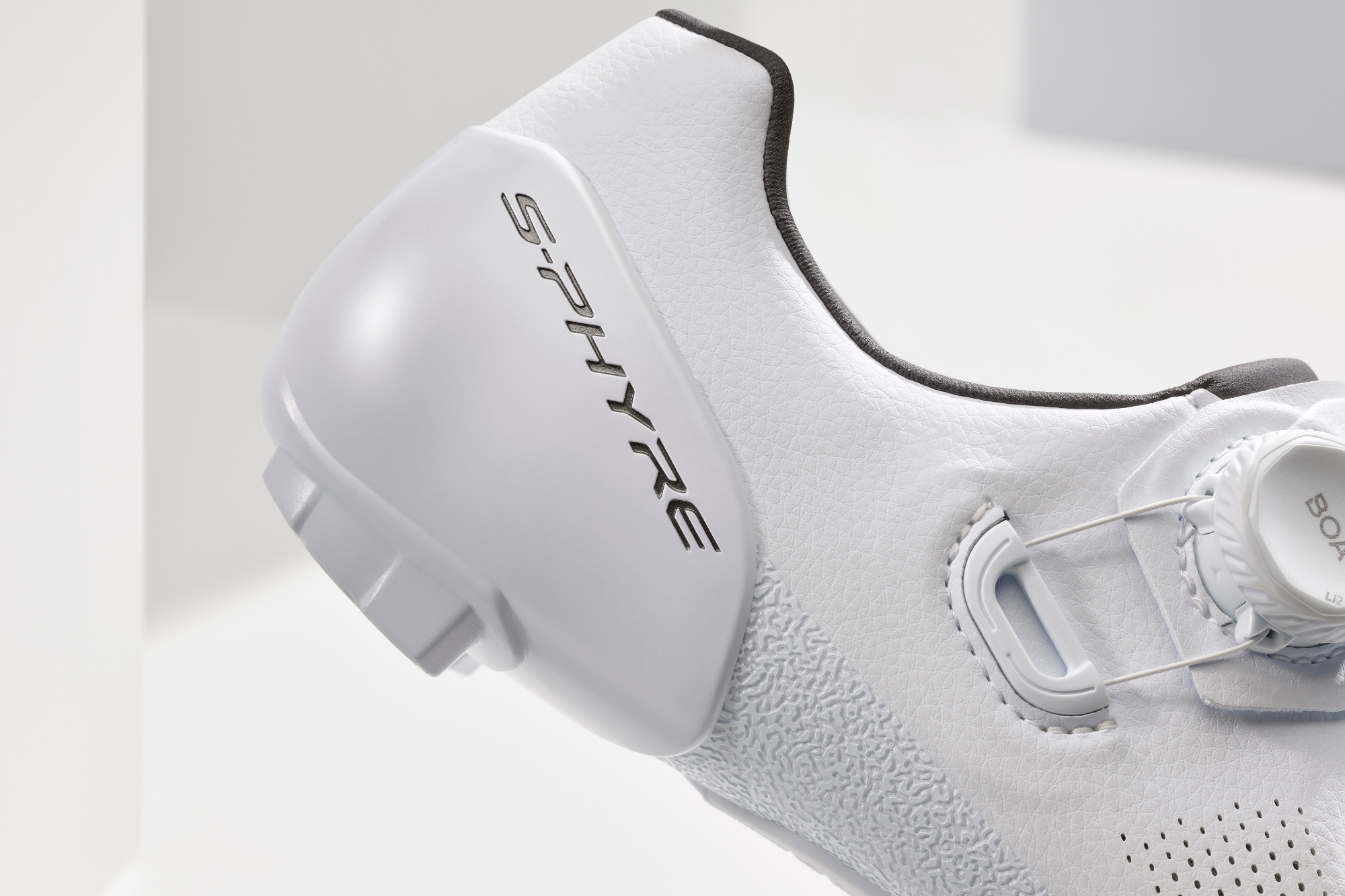The popularity of gravel racing has been responsible for a reimagining of the equipment used. Today there are plenty of examples of super light machines, components and accessories that owe much to their road racing brethren, where saving watts trumps all.
But still, gravel isn’t tarmac and the demands of racing on surfaces that are so susceptible to the weather means that enhanced aerodynamics alone won’t cut it. A case in point are the new gravel shoes from Shimano, the RX910 S-Phyre.
(Image credit: SHIMANO)
Acknowledging the inherent dilemma that lies at the heart of gravel racing – the need for speed and power but also the requirement of effectively dealing with mud and such like – Shimano has designed the shoe to be both light and stiff but also deliver the necessary traction for when the conditions demand it as well enough pedalling comfort for races that can last for many hours, a feature of many of the best gravel shoes.

(Image credit: SHIMANO)
To find the right balance, Shimano turned to its professional gravel racers, such as Pete Stetina for assistance.
“Sure, you can get away with road or MTB shoes for gravel racing,” says Stetina. “But to optimize for gravel performance, we need a light and stiff shoe that has a solid contact patch for steady power transfer plus the capability to handle the occasional hike-a-bike or muddy race.”

(Image credit: Shimano)
Determined that balance shouldn’t mean compromise and armed with the feedback from Stetina, Shimano set out to find a solution. The resulting S-Phyre RX910 has many of the elements you’d expect from a shoe designed by and for racers: a stiff carbon sole, an anti-twist heel cup, two Boa Li2 dials and lightweight and breathable low profile upper. But it also has a new cleat system that Shimano is calling “revolutionary”.
Described as “the heart” of the RX910, the Pontoon Cleat System features two modular and replaceable TPU contact blocks that are designed to greatly improve the shoe-to-pedal contact point. Shimano says the design allows for a pedalling interface and thus similar power transfer to a road shoe but with all the necessary requirements for off-road riding. Stetina approves.
“For me [the Pontoon Cleat System] is the most exciting point of this shoe,” he says. “You now have road stability and power transfer while still having the off-road benefits of mud shedding and quick engagement of SPD.”

(Image credit: Shimano)
Instead of having the contact blocks mounted on the shoe’s outsole Shimano has made them as part of the cleat, meaning they move with it, both vertically or laterally, regardless of how you choose to position your cleat. Coupled with the ability to replace the blocks before they lose their effectiveness, the system does appear to have some serious advantages when compared to the competition.

(Image credit: Shimano)
Other noteworthy details include dual drainage holes, which allow water to exit as well as providing additional breathability on hot days, a lugged outsole to help shed mud and add grip, and an ‘surround wrapping upper’ that’s similar to that used on the S-Phyre road shoes.
As with most Shimano shoes they are offered in both regualar and wide fittings (40-48 only) and across a range of full and half sizes, from 38-48 and 41.5 to 46.5.

(Image credit: Shimano)
The RX910 is available in four colours – black, white, blue and green – and has a claimed weight of 304 grams for a size 43. Given that when we reviewed the flagship road shoe, the RC903, our pair of 45s weighed 546g for the pair, it’s an impressively light offering for a shoe with a lugged outsole.
Unsurprisingly, given these are the range topping shoe line and the shoe’s intended market, the RX910 doesn’t come cheap, with the retail prices listed as $480 / £369.99. It remains to be seen if the cleat-tech will trickle down to some real world price tag shoes, where the system could bring some marked benefits.
